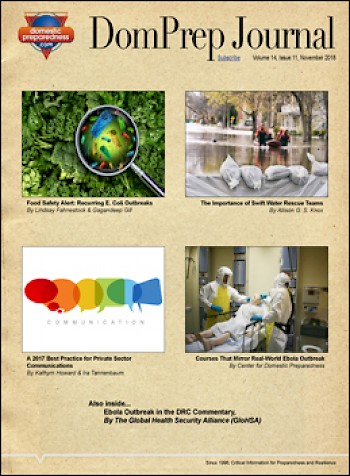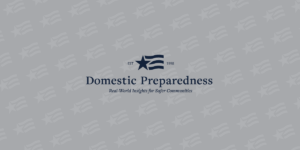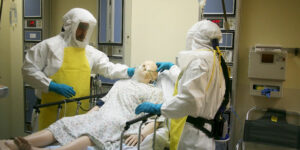

Food Safety Alert: Recurring E. Coli Outbreaks
Gagandeep Gill and Lindsay Fahnestock
November 28, 2018
Food is essential to life. Its production, distribution, and consumption present unique – and increasingly urgent – economic and public health challenges. Roughly 50% of the world’s assets, 50% of global employment, and 50% of consumer expenditures are related to the food system. Closer to home, the second and third largest employers in the United States are in the food industry. About one-third of Americans eat at least one meal away from home each day. Anticipation, evaluation, and control of food-related infections and contamination are essential functions provided by the governmental public health system.

Combating Public Health & Security Concerns
Catherine L. Feinman
November 28, 2018
In 2014, the United States was directly exposed to the Ebola virus, which was at that time
relatively unknown on domestic soil. The nation was underprepared to manage the public relations issues
associated with this scenario. Since that time, roundtables have been conducted, responder trainings
have been created, and information has been disseminated to better prepare responders and inform the
public. However, there is a delicate balance when informing the public of potential threats: provide
enough information to mitigate new exposure risks, but do not overhype the threat.

Ebola Outbreak in the DRC Commentary
The Global Health Security Alliance
November 26, 2018
On 6 November 2018, the United States Centers for Disease Control and Prevention suggested the current Ebola outbreak in North Kivu and Ituri Provinces of the Democratic Republic of the Congo (DRC) might not be contained due to lack of cooperation from local communities and an unstable security situation. Assertions such as these have driven the Global Health Security Alliance, an independent network of internationals experts, to distribute a commentary about the “Ebola Outbreak in the DRC.” Driven by the shared understanding that health and security issues have increasing and interrelated global impacts, the Alliance separates facts from hyperboles in this informative document on this international public health threat.

A 2017 Best Practice for Private Sector Communications
Kathryn Howard, Ira Tannenbaum, Amanda N. Coats and Ryan Hagen
November 21, 2018
Coordination between the public and private sectors are essential for communicating effectively to
the public during emergencies. It is important for government agencies to build relationships with
private partners during “blue skies” to ensure that proper plans and messaging are in place in the event
of an actual emergency. New York City (NYC) Emergency Management has worked extensively to build a
robust network of private partners from various industries that can assist with the dissemination of
critical information to the public before, during, and after emergencies. In 2017, NYC Emergency
Management conducted a communication drill with private sector partners to test the potential reach of
New York City’s emergency messaging.

Courses That Mirror Real-World Ebola Outbreak
The Center for Domestic Preparedness
November 14, 2018
When faced with cases of highly infectious diseases, emergency responders and medical receivers need to know how to protect themselves and prevent the disease from spreading to others. One training facility is focusing on this topic with courses that instruct healthcare workers and other responders about infection-control barrier guidelines and isolation protocols.

The Importance of Swift Water Rescue Teams
Allison Knox
November 7, 2018
Emergency management is a complex, collaborative network of agencies, levels of government, nonprofit organizations, and volunteers coming together following a disaster. In addition to general plans and practices that can be applied to many emergency responses, some emergencies require more specialized training that may not be available in every jurisdiction. Swift water rescue teams are assets that may be needed now more than ever.

